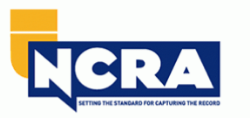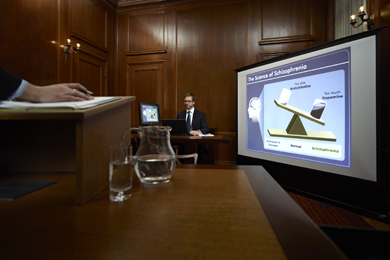Astound the Jury: Necessary Elements of a Powerful Test Discussion
In the realm of legal campaigning for, the capacity to captivate a court is critical to the result of a test (trial presentation). Essential aspects such as understanding the target market, crafting a compelling narrative, and understanding spoken and non-verbal communication are vital elements of a reliable discussion. The strategic use of aesthetic help can considerably improve understanding and retention of essential debates. As these aspects link, they develop a natural strategy that not only informs but additionally involves jurors on numerous degrees. What specific techniques can truly change a basic discussion right into a remarkable experience for the jury?

Recognizing Your Audience
Understanding your audience is a pivotal aspect of efficient test presentation. An effective presentation rests on the capability to realize the demographics, worths, and predispositions of jurors. This comprehension educates exactly how arguments are mounted, evidence is provided, and psychological appeals are crafted, making certain that the message resonates with the jurors on an individual level.
Study shows that jurors come from varied backgrounds and may have differing levels of comprehending pertaining to legal proceedings. Additionally, recognizing the jurors' possible biases and life experiences enables the trial speaker to prepare for arguments and address concerns proactively.
Effective test presentation likewise involves observing jurors' reactions during the proceedings. Involving with jurors as people instead than a collective system is crucial in promoting a strong link in the courtroom.

Crafting an Engaging Story
Crafting a compelling story is vital in directing jurors with the intricacies of a case. A well-structured story not only simplifies detailed legal principles but additionally involves jurors on an emotional degree, making the info a lot more relatable and unforgettable.
To achieve this, lawyers ought to begin by recognizing the core message they want to communicate. This message ought to resonate with the jurors' worths and experiences, cultivating a connection that goes beyond mere truths. The story ought to unravel rationally, presenting occasions in a clear series to avoid complication. This sequential technique can aid jurors adhere to the progression of occasions, emphasizing reason and result.
Incorporating human aspects-- such as individual tales or stories-- can additionally boost the narrative's effect. These components stimulate empathy, enabling jurors to visualize the repercussions of the case on realities. In addition, using a regular motif throughout the discussion enhances the main disagreement, making it much easier for jurors to retain vital factors.
Eventually, an engaging narrative transforms a trial presentation from a mere recounting of realities into a convincing tale that captivates the jury, urging them to mull over with both factor and emotion.
Utilizing Visual Aids
Incorporating aesthetic help into a trial discussion can dramatically enhance jurors' comprehension and retention of details. Visual products such as charts, layouts, photos, and videos can transform complex lawful ideas and proof into conveniently absorbable layouts. By involving multiple detects, these you can look here aids enable jurors to imagine the instance's crucial elements, making it simpler for them to adhere to along and realize elaborate details.
In addition, well-designed aesthetic aids can emphasize important factors and emphasize relationships in between different pieces of evidence. Timelines can efficiently show the series of events, while annotated images can make clear particular information relevant to the case. This not just help in understanding however additionally enhances the narrative presented by the attorney.
It is essential, nonetheless, to make certain that aesthetic help matter, clear, and skillfully provided. Overly complex or chaotic visuals might bewilder jurors and detract from the message. When utilized sensibly, aesthetic aids offer to match the dental disagreements and improve the total influence of the trial presentation. Inevitably, effective visual communication can be an effective tool in convincing jurors and assisting them reach educated conclusions.
Understanding Verbal Communication
Effective verbal interaction is crucial in a trial discussion, as it functions as the key ways whereby attorneys share their disagreements click for more and get in touch with jurors. Grasping this ability involves clearness, persuasion, and interaction. Lawyers must express their factors plainly and briefly, preventing legal jargon that may perplex jurors. Simpleness in language promotes understanding and assists jurors realize complex problems presented during the trial.
In addition, tone and pacing considerably effect just how messages are obtained. A certain tone shares authority, while appropriate pacing permits jurors to soak up info without feeling overwhelmed. Lawyers ought to additionally vary their vocal inflections to highlight key factors and preserve jurors' passion throughout the discussion.
In addition, the company of verbal debates is important. Structuring the narrative realistically and coherently helps jurors follow the lawyer's line of thinking, making it easier for them to retain important information. Using influential techniques, such as storytelling, can also enhance the psychological resonance of the disagreements offered, therefore developing a much more profound link with jurors.
Inevitably, grasping spoken interaction not only strengthens a lawyer's instance yet additionally fosters count on and relationship with the court, significantly enhancing the opportunities of a beneficial verdict.

Engaging With Body Movement
Nonverbal communication plays a crucial function in trial discussions, usually conveying messages that words alone can not reveal. Body language, including motions, pose, facial expressions, and eye get in touch with, considerably affects just how jurors view the credibility and sincerity of the presenter. A certain position, with shoulders back and an open stance, can impart trust, while closed-off body movement may suggest defensiveness or uncertainty.

Faces should mirror the emotions connected with the situation, enhancing the narrative being provided. For example, a sincere expression throughout a poignant moment can elicit empathy and reinforce the sob story. Eventually, grasping body language is necessary for effective trial discussions, as it enhances spoken communication and establishes a compelling existence that resonates with the jury.
Final Thought
To conclude, astounding the court requires a tactical method that encompasses recognizing the target market, crafting a compelling narrative, making use of visual help, understanding spoken communication, and involving with body language. Each element plays an essential role in producing a powerful trial discussion that resonates with jurors on both psychological and intellectual degrees (trial presentation). By integrating these components successfully, lawyers can significantly improve their capability to convince and affect court decision-making